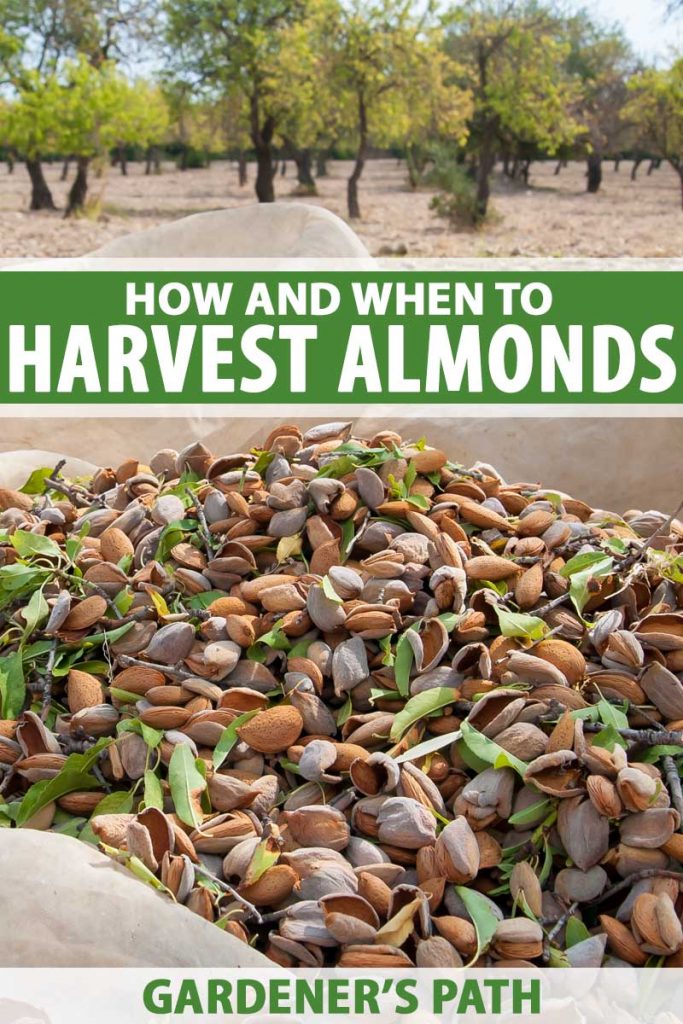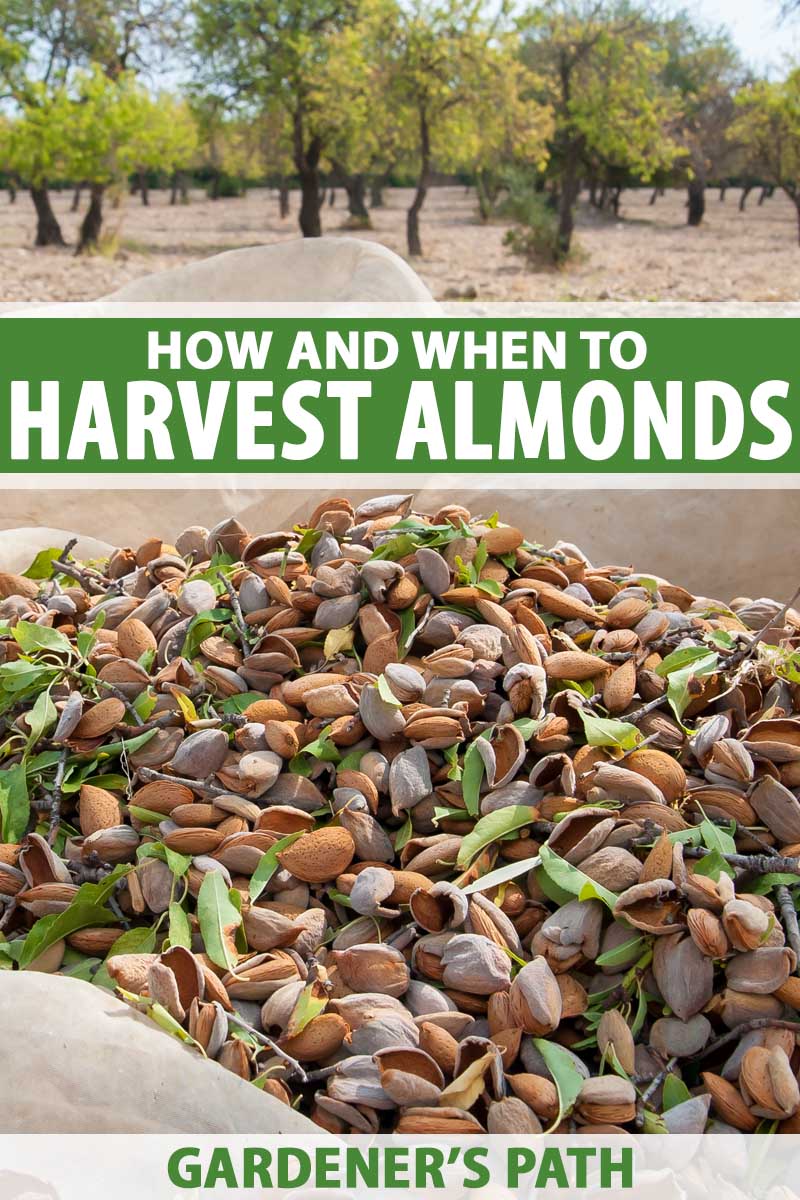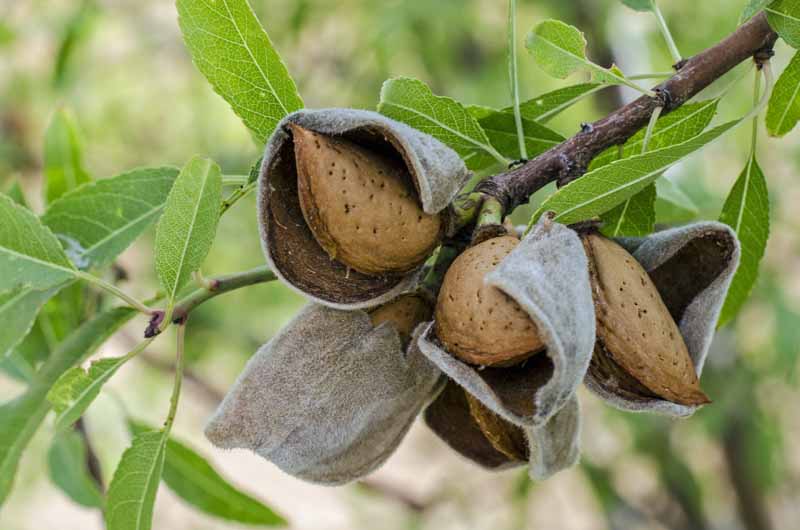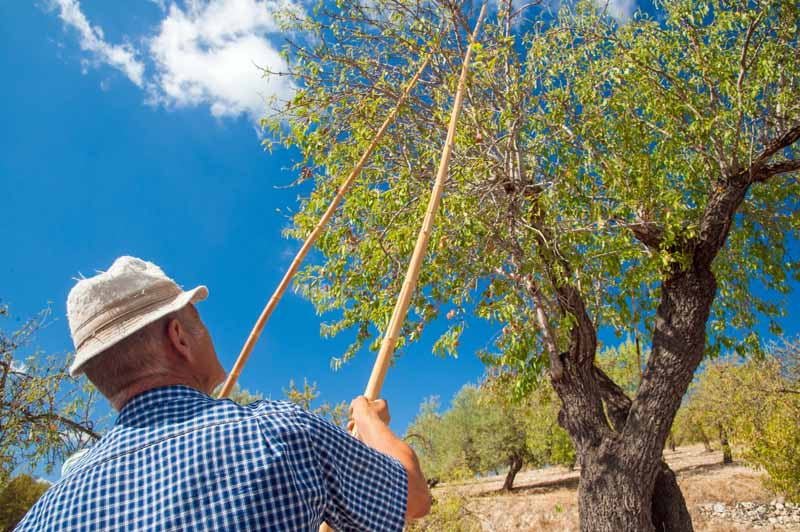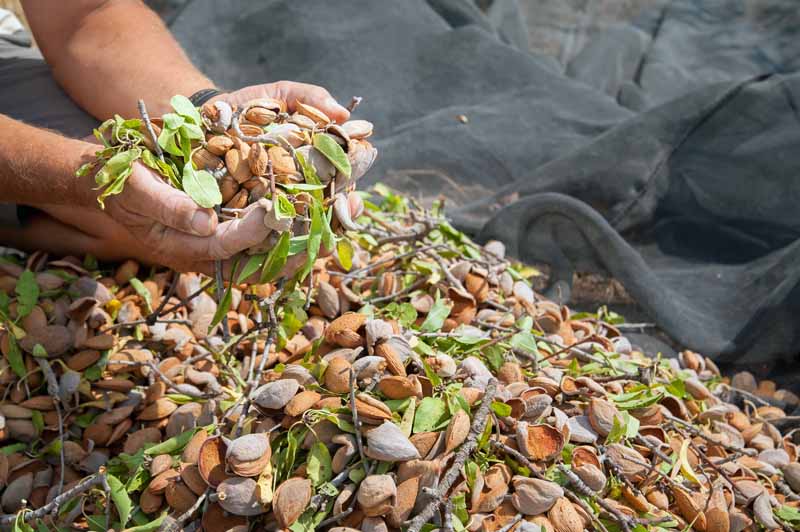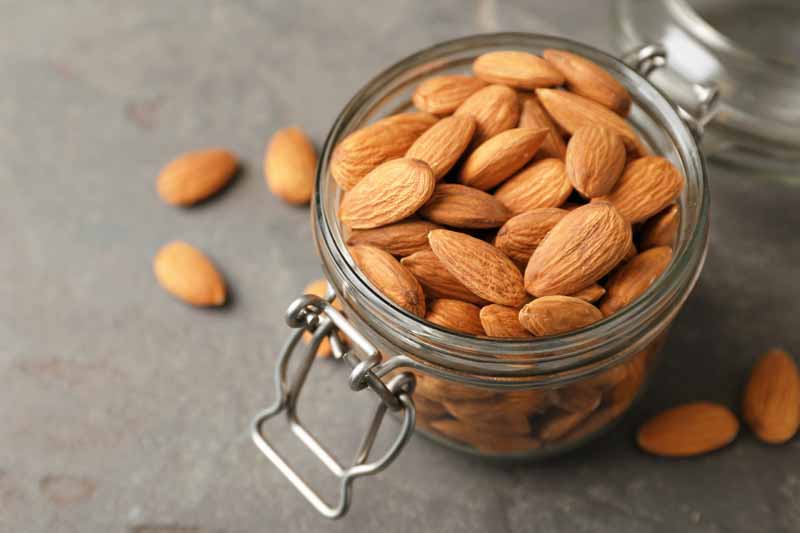Now the question is, how and when is best to harvest your almonds to make the most of them? We link to vendors to help you find relevant products. If you buy from one of our links, we may earn a commission.
Don’t be Duped by Your Drupes
You might know that peanuts aren’t nuts, but it might come as a surprise to you (as it did to me when I found this out!) that almond trees don’t actually produce nuts. Instead, they produce something called drupes. A drupe is a type of fruit that has an outer fleshy part around a shell, which in turn protects the seed inside. Peaches, plums, and cherries are all typically well-known drupes, but somewhat more surprisingly, so are walnuts, almonds, and pecans – they’re just drupes from which we eat the seed inside the pit instead of the fruit! Drupes grow from the tree’s fertilized flowers and mature in autumn. Almond drupes have a green, leathery hull that surrounds them. To help your drupes along, it’s best to give your almonds a healthy watering just before harvest, as this encourages the drupes to split.
Signs of Splitting? It’s Time to Get Picking
If you want to know when to pick your almonds, you just need to observe your drupes. When the outer husk dries and splits, and the drupes start to fall from the tree, it’s time to start thinking about picking almond nuts. A safe bet is to start picking when you see that most (around the 75% mark) of your drupes have started to split. This usually happens during August or September, depending on the variety of almond. But, beware – don’t be duped by your drupes! A top tip is to make sure you don’t just check your trees at eye-level. Because almonds ripen from the top of the tree down, by the time you see that they are ready, you may well be too late. Although you technically don’t have to harvest immediately, your nuts will spoil if they get wet, so it’s best to pick them before any risk of rain. Also, almonds provide an irresistible treat for hungry squirrels and some birds, so you’ll want to get there before they do! Regardless of this, it’s generally preferable to harvest them when you see that they are ready, as it has been shown that a late harvest reduces crop volume, nut quality, and also shortens their shelf life. The best option is to harvest what’s ripe as soon as you see signs of splitting.
How to Harvest Your Haul
Thanks to their protective shells, harvesting almonds is easy. All you have to do is knock or shake them from the tree and let them fall to the ground, where you can put a tarp or groundsheet in place for ease of collection.
Commercial farmers often have machines made just for shaking the nuts to the ground. But for backyard harvests, all you really need is a big stick to bang the branches with.
This works really well on small branches. It’s best to find a wooden, fiberglass, or plastic pole. For the larger branches it might be a bit trickier, in which case you can tap them with a rubber mallet.
Obviously, watch out for falling nuts overhead. This can be a bit of a hazard, but one that is easily solved by wearing a hard hat or glasses to protect your eyes (always better safe than sorry!).
Hulling and Drying
Straight away after harvesting, the hulls around the nuts need to be removed. For small quantities, this is best done by hand. This process can be a bit long, but it is still the most efficient way for non-commercial growers to process their crops. Even nuts that are harvested at the correct time need to be dried out a bit more in order to prevent rotting and mold growth in storage. Luckily, it’s easy to dry the nuts. All you need to do is spread them out thinly on a tray or a screen somewhere with good air circulation. If this is somewhere outside, you might have to add a sheet over the top of them to make sure they’re safe from pesky pests or, most importantly, protected from the rain, which will ruin your harvest. Every now and then, just have give a few almonds a quick check. If their kernels break, they’re dry enough and can be moved to storage. If they bend and are a bit rubbery, they need to be dried a bit longer.
Storage
Once your kernels are properly dried, it’s advisable to freeze them to kill off any pests that might be present, especially navel orange worms. Before storing them, you then have a decision – to shell, or not to shell. Shelled almonds can last happily up to 8 months at room temperature, or out of their shells for around a year chilled at 32-45°F (0-7°C).
One thing to watch out for – the nuts will absorb any particularly pungent smells around them, so it’s best to avoid storing them near anything particularly fragrant like onions or garlic. Storage in airtight containers is preferable, to avoid any mishaps. Any nuts that are dark in color, moldy, shriveled, that smell bitter or sour should be discarded, as occasionally the fats in the kernels can go bad.
In a Nutshell…
And for more on tending to your own homegrown nut harvests, you’ll enjoy the following articles:
How to Grow and Care for a Macadamia Nut Tree With a Bit of Patience, Here’s How You Can Yield Masses of Pecans Death By Black Walnut: The Facts on Juglone Toxicity
© Ask the Experts, LLC. ALL RIGHTS RESERVED. See our TOS for more details. Uncredited photos: Shutterstock.
